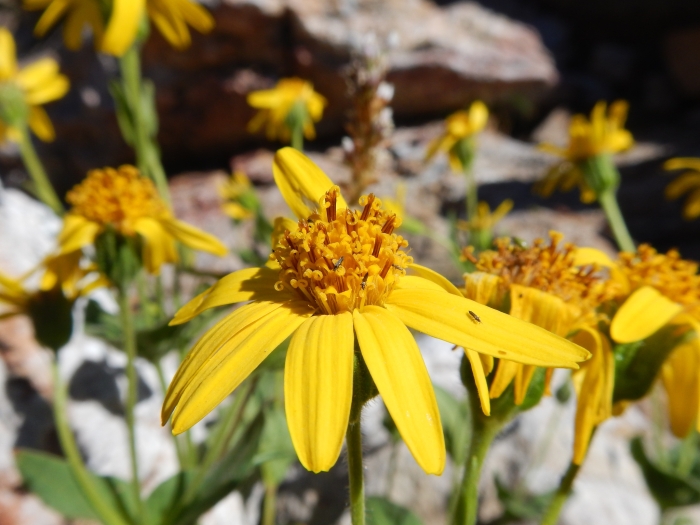Soft Arnica
(Arnica mollis)
Soft Arnica (Arnica mollis)
/
/

Matt Lavin
CC BY 4.0
Image By:
Matt Lavin
Recorded By:
Copyright:
CC BY 4.0
Copyright Notice:
Photo by: Matt Lavin | License Type: CC BY 4.0 | License URL: http://creativecommons.org/licenses/by/4.0/ | Rights Holder: Matt Lavin | Publisher: iNaturalist | Date Created: 2016-08-19T15:45:33-07:00 |

























Estimated Native Range
Summary
Arnica mollis, commonly known as soft arnica or hairy arnica, is a perennial herb that is native to a variety of habitats including subalpine meadows, moist mountainous areas, and streambanks across western North America, from British Columbia and Alberta to Alaska, extending south to California and New Mexico, with isolated populations in New Hampshire. It typically grows to a height of 8 to 24 inches (20 to 61 cm) and features hairy, glandular stems. The leaves are oblong, arranged in 3 to 5 pairs along the stem. Soft arnica blooms from late spring to early summer, producing daisy-like flower heads with bright yellow disc and ray florets that are quite showy and attract pollinators. The fruit is an achene topped with a brownish pappus, aiding in wind dispersal.
Soft arnica is valued for its medicinal properties and is often used in traditional remedies for bruises, sprains, and muscle aches. It is also appreciated for its ornamental qualities in wildflower gardens and naturalistic plantings. In cultivation, soft arnica prefers well-drained, moist soils and can tolerate partial shade to full sun conditions. It is relatively low maintenance but requires consistent moisture. While not commonly found in the horticultural trade, it can be propagated by seed or division. Gardeners should be aware that all parts of the plant can be toxic if ingested and it may cause skin irritation on contact.CC BY-SA 4.0
Soft arnica is valued for its medicinal properties and is often used in traditional remedies for bruises, sprains, and muscle aches. It is also appreciated for its ornamental qualities in wildflower gardens and naturalistic plantings. In cultivation, soft arnica prefers well-drained, moist soils and can tolerate partial shade to full sun conditions. It is relatively low maintenance but requires consistent moisture. While not commonly found in the horticultural trade, it can be propagated by seed or division. Gardeners should be aware that all parts of the plant can be toxic if ingested and it may cause skin irritation on contact.CC BY-SA 4.0
Plant Description
- Plant Type: Herb
- Height: 0.5-2 feet
- Width: 1-2 feet
- Growth Rate: Slow
- Flower Color: Yellow
- Flowering Season: Summer, Fall
- Leaf Retention: Deciduous
Growth Requirements
- Sun: Full Sun, Part Shade
- Water: High
- Drainage: Fast, Medium
Common Uses
Bee Garden, Butterfly Garden
Natural Habitat
Subalpine meadows, moist mountainous areas, and streambanks across western North America
Other Names
Common Names: Wooly Arnica, Soft Arnica, Cordilleran Arnica, Cordilleran Leopardbane
Scientific Names: , Arnica mollis, Arnica amplifolia, Arnica arachnoidea, Arnica coloradensis, Arnica confinis, Arnica crocea, Arnica crocina, Arnica macillenta, Arnica mollis var. mollis
GBIF Accepted Name: